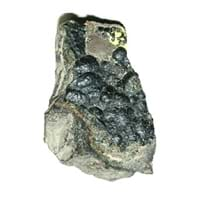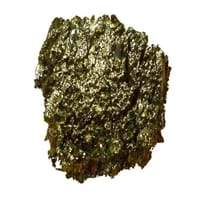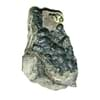Uranium Scandium Comparison
Periodic Table
Symbol
U
Sc
Group Number
0
18
3
15
Period Number
7
4
Block
f block
d block
Element Family
Actinide
Transition Metal
CAS Number
7440611
28
7440202
99+
Space Group Name
Cmcm
P63/mmc
Space Group Number
63.00
10
194.00
5
Facts
Interesting Facts
- Major mining countries of Uranium include Russia, Australia, Namibia, Canada and Niger and total 33% Uranium are mine in Kazakhstan.
- Scandium is known as one of the rare earth elements.
- Scandium metal found in rare minerals called Wolframite .
Sources
Earth's crust, Mining, Ores of Minerals
Found in Minerals, Mining, Ores of metals, Ores of Minerals
History
Who Discovered
Not Available
Lars Fredrik Nilson
Discovery
In 1789
In 1879
Abundance
Abundance In Universe
2 * 10-8 %
29
3 * 10-6 %
15
Abundance In Sun
~0.0000001 %
26
~0.000004 %
16
Abundance In Meteorites
0.00 %
99+
0.00 %
18
Abundance In Earth's Crust
0.00 %
36
0.00 %
23
Abundance In Oceans
0.00 %
11
0.00 %
32
Uses
Uses & Benefits
- The main use of this metal include nuclear fuel which is used to generate electricity yin nuclear power stations.
- Synthetic elements like transuranium are made from Uranium metal.
- Uses of Scandium are limited to research purpose only. However, it has very low density and higher melting point.
- Its compounds like scandium iodide is used in mercury vapor lamps to produce very bright white light.
Industrial Uses
Ammunition Industry, Chemical Industry
Electrical Industry, Electronic Industry
Medical Uses
NA
NA
Other Uses
Alloys, Jewellery, Nuclear Reactor's Fuel, Sculptures, Statues
Alloys
Biological Properties
Toxicity
Toxic
Non Toxic
Present in Human Body
No
Yes
In Blood
Not Available
0.01 Blood/mg dm-3
22
In Bone
Not Available
0.00 p.p.m.
34
Physical Properties
Melting Point
1,132.00 °C
39
1,539.00 °C
24
Boiling Point
3,818.00 °C
16
2,832.00 °C
35
Appearance
Physical State
Solid
Solid
Color
Silvery Gray
Silvery White
Luster
Metallic
Lustrous
Hardness
Mohs Hardness
6.00
6
Not Available
Brinell Hardness
2,350.00 MPa
2
750.00 MPa
12
Vickers Hardness
1,960.00 MPa
2
Not Available
Speed of Sound
3,155.00 m/s
25
Not Available
Optical Properties
Allotropes
No
No
α Allotropes
Not Available
Not Available
β Allotropes
Not Available
Not Available
γ Allotropes
Not Available
Not Available
Chemical Properties
Chemical Formula
U
Sc
Isotopes
Known Isotopes
25
14
13
26
Electronegativity
Pauling Electronegativity
1.38
28
1.36
29
Sanderson Electronegativity
Not Available
1.02
21
Allred Rochow Electronegativity
1.22
26
1.20
27
Allen Electronegativity
Not Available
1.19
36
Electropositivity
Pauling Electropositivity
2.62
26
2.64
25
Ionization Energies
1st Energy Level
597.60 kJ/mol
99+
633.10 kJ/mol
99+
2nd Energy Level
1,420.00 kJ/mol
99+
1,235.00 kJ/mol
99+
3rd Energy Level
1,900.00 kJ/mol
99+
2,388.60 kJ/mol
99+
4th Energy Level
3,145.00 kJ/mol
99+
7,090.60 kJ/mol
6
5th Energy Level
Not Available
8,843.00 kJ/mol
6
6th Energy Level
Not Available
10,679.00 kJ/mol
7
7th Energy level
Not Available
13,310.00 kJ/mol
8
8th Energy Level
Not Available
15,250.00 kJ/mol
11
9th Energy Level
Not Available
17,370.00 kJ/mol
14
10th Energy Level
Not Available
21,726.00 kJ/mol
13
11th Energy Level
Not Available
24,102.00 kJ/mol
16
12th Energy Level
Not Available
66,320.00 kJ/mol
2
13th Energy Level
Not Available
73,010.00 kJ/mol
2
14th Energy Level
Not Available
80,160.00 kJ/mol
3
15th Energy Level
Not Available
89,490.00 kJ/mol
4
16th Energy Level
Not Available
97,400.00 kJ/mol
5
17th Energy Level
Not Available
105,600.00 kJ/mol
6
18th Energy Level
Not Available
117,000.00 kJ/mol
7
19th Energy Level
Not Available
124,270.00 kJ/mol
8
Electrochemical Equivalent
1.48 g/amp-hr
99+
0.56 g/amp-hr
99+
Electron Work Function
3.63 eV
30
3.50 eV
31
Other Chemical Properties
Ionization, Radioactive Isotopes, Radioactivity
Corrosion, Flammable, Ionization, Radioactive Isotopes, Solubility
Atomic Properties
Atomic Number
92
26
21
99+
Electron Configuration
[Rn] 5f3 6d1 7s2
[Ar] 3d1 4s2
Crystal Structure
Orthorhombic (ORTH)
Hexagonal Close Packed (HCP)
Crystal Lattice
ORTH-Crystal-Structure-of-Uranium.jpg#100
HCP-Crystal-Structure-of-Scandium.jpg#100
Atom
Number of Protons
92
26
21
99+
Number of Neutrons
146
13
24
99+
Number of Electrons
92
26
21
99+
Radius of an Atom
Atomic Radius
156.00 pm
29
162.00 pm
26
Covalent Radius
196.00 pm
14
170.00 pm
25
Van der Waals Radius
186.00 pm
33
211.00 pm
25
Atomic Weight
238.03 amu
21
44.96 amu
99+
Atomic Volume
12.59 cm3/mol
40
15.00 cm3/mol
34
Adjacent Atomic Numbers
Valence Electron Potential
170.00 (-eV)
4
58.00 (-eV)
24
Lattice Constant
295.08 pm
99+
330.90 pm
99+
Lattice Angles
π/2, π/2, π/2
π/2, π/2, 2 π/3
Lattice C/A Ratio
Not Available
1.59
7
Mechanical Properties
Density
Density At Room Temperature
19.10 g/cm3
17
2.99 g/cm3
99+
Density When Liquid (at m.p.)
17.30 g/cm3
7
2.80 g/cm3
99+
Tensile Strength
Not Available
Not Available
Viscosity
Not Available
Not Available
Vapor Pressure
Vapor Pressure at 1000 K
Not Available
0.00 (Pa)
22
Vapor Pressure at 2000 K
0.01 (Pa)
20
91.30 (Pa)
3
Elasticity properties
Shear Modulus
111.00 GPa
10
29.10 GPa
24
Bulk Modulus
100.00 GPa
16
56.60 GPa
21
Young's Modulus
208.00 GPa
10
74.40 GPa
26
Poisson Ratio
0.23
30
0.28
18
Other Mechanical Properties
Ductile, Malleable
NA
Magnetic Properties
Magnetic Characteristics
Specific Gravity
18.80
10
2.99
99+
Magnetic Ordering
Paramagnetic
Paramagnetic
Electrical Properties
Electrical Property
Poor Conductor
Conductor
Resistivity
0.28 nΩ·m
99+
562.00 nΩ·m
10
Electrical Conductivity
0.04 106/cm Ω
37
0.02 106/cm Ω
99+
Electron Affinity
Not Available
18.10 kJ/mol
33
Thermal Properties
Specific Heat
0.12 J/(kg K)
40
0.60 J/(kg K)
8
Molar Heat Capacity
27.67 J/mol·K
15
25.52 J/mol·K
37
Thermal Conductivity
27.50 W/m·K
40
15.80 W/m·K
99+
Critical Temperature
Not Available
Not Available
Thermal Expansion
13.90 µm/(m·K)
27
10.20 µm/(m·K)
39
Enthalpy
Enthalpy of Vaporization
477.00 kJ/mol
13
314.20 kJ/mol
28
Enthalpy of Fusion
15.48 kJ/mol
19
14.10 kJ/mol
25
Enthalpy of Atomization
489.50 kJ/mol
14
343.00 kJ/mol
28
Standard Molar Entropy
50.20 J/mol.K
31
34.60 J/mol.K
99+
|
||
|
||
|












